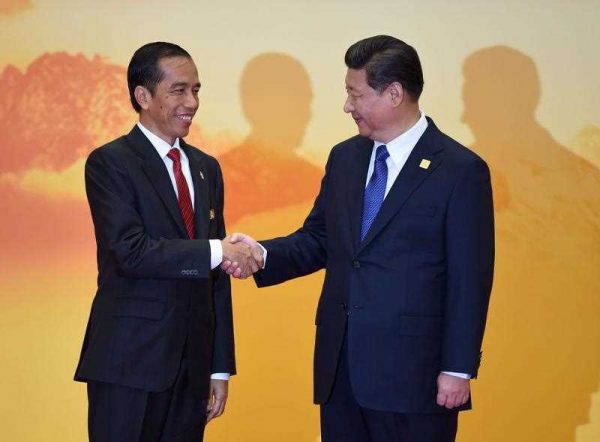Any effective security and military presence in the area will depend on local economic and infrastructure development. How will Indonesia under President Joko Widodo (Jokowi) manage this potential point of contention with China?
More than a thousand kilometres from Jakarta, the Natuna islands are spread across 262,000 square kilometres of water, more than ten times their total land size. This presents a major geographical challenge.
The tyranny of distance compounds Indonesia’s vulnerability in monitoring and controlling this northern frontier. There is no direct commercial flight between Jakarta and Ranai, the largest town in the Natuna Islands, and daily commodities must be shipped. The absence of a deep-water port prevents larger ships from docking at Ranai, while smaller ships cannot risk sailing the rough seas during monsoon season.
Lacking effective control from Jakarta, the Natuna Islands are beset by a plethora of security problems.
Illegal fishing is rampant in the area. Indonesia claims to lose around US$25 billion annually to illegal fishing, although this figure seems highly inflated. But even 10 per cent of this figure could still present a huge loss for a country where 11 per cent of the population live on less than US$2 a day. The problem of illegal fishing is becoming more complicated due to the Natunas’ proximity to the disputed zones in the South China Sea.
Despite Indonesia officially insisting it is a non-claimant in the South China Sea disputes, in the waters northeast of the Natuna Islands Indonesia’s 200-nautical-mile exclusive economic zone (EEZ) overlaps with China’s nine-dash line claim.
While it does not want to overtly antagonise Beijing, Jakarta feels it must do something to challenge China’s claim. Several Chinese fishing vessels have been arrested. In 2013, this triggered a brief skirmish involving one Indonesian patrol boat. But the number of Chinese vessels arrested in the area thus far pales in comparison to Vietnamese and Thai vessels.
While the Indonesian government claims that the Natunas’ fisheries could yield around 500,000 tonnes annually, currently fishing is mostly subsistence. A lack of infrastructure, such as cold storage, adequate fishing ports and seafood processing facilities, as well as inadequate transport for the catch, means that any substantial improvement depends on a massive capital injection, which the local government can ill-afford.
It is also crucial to develop an adequate energy supply to power the Natunas’ economy. In areas beyond Ranai, power shortages result in frequent blackouts. Ironically, numerous offshore oil and gas installations dot the Natunas’ seascape. Parts of its surrounding seabed are reported to contain one of the world’s largest natural gas deposits.
Contrary to reports of a build-up, Indonesia still seems to maintain a low military profile in the area. Its naval presence is limited to small vessels unable to safely navigate the rough seas of Indonesia’s EEZ and no combat aircraft are permanently stationed at Ranai airport. Military exercises have been conducted in the Natunas since 1996, but substantial military upgrades in the Natunas would be challenging. This is due to limited infrastructure and difficult access to operational necessities, such as fuel and maintenance and repair supplies.
Attracting foreign investment, especially Chinese, could play into Indonesia’s broader strategy of gaining recognition and respect for its territorial sovereignty. Despite the Natunas’ lack of infrastructure, foreign investment has trickled in. Three Chinese companies are reportedly showing interest in the local seafood industry. Chinese investment could increase if Jakarta embraces Beijing’s ‘21st Century Maritime Silk Road’ to help build President Jokowi’s own maritime vision.
But this could send the wrong signal to Beijing. Indonesia might give the impression that it is unconcerned with China’s ambitions in the South China Sea. With reclamation works underway in nearby Chinese-occupied areas, the Natuna Islands could easily fall under Beijing’s air and naval superiority. Airstrips in the Fiery Cross or Johnson South Reef could place Chinese frontline strike fighters much closer to Indonesia. This would make it possible for China to enforce its air defence identification zone over some parts of the Natunas.
These areas could also become a base for Chinese long-distance fishermen, and their armed escorts, to operate within Indonesia’s EEZ. This would increase the possibility of encounters with Indonesian fishermen and patrol vessels.
Indonesia should act immediately to develop the Natuna Islands. It can begin simply by building a power plant sufficient to meet growing local demand, thus allowing everything else to follow.
Ristian Atriandi Supriyanto is an Associate Research Fellow with the Maritime Security Programme at the S. Rajaratnam School of International Studies (RSIS), Nanyang Technological University.
A version of this article was first published here by RSIS.


We hope that Indonesia continues to build up security in around Natuna. It is a very important stratgeic, pivotal area in the South China Sea conflict.